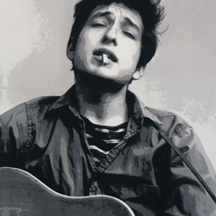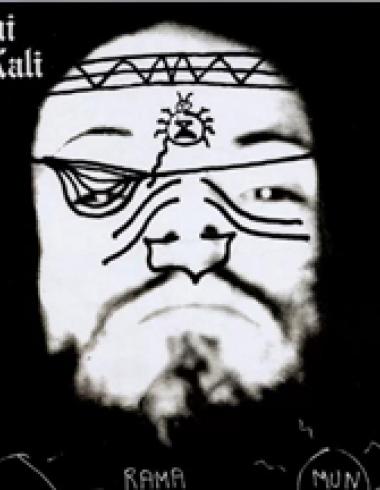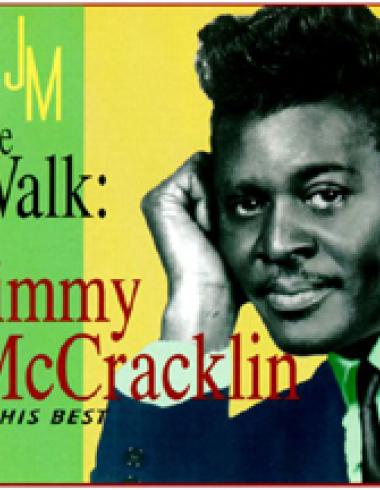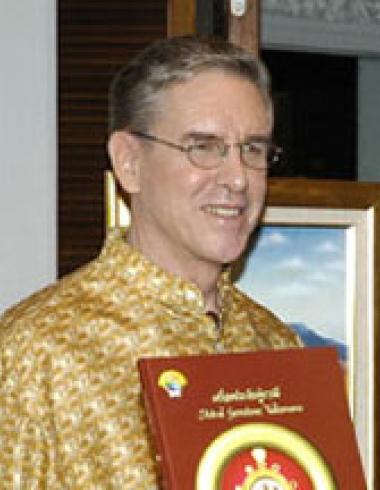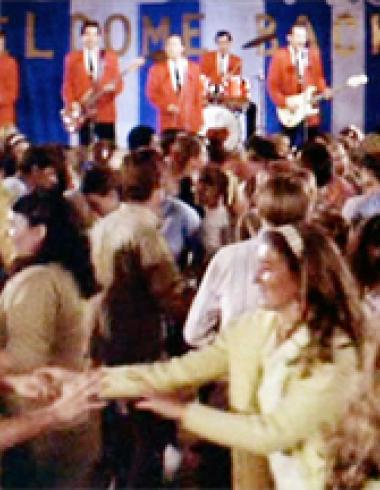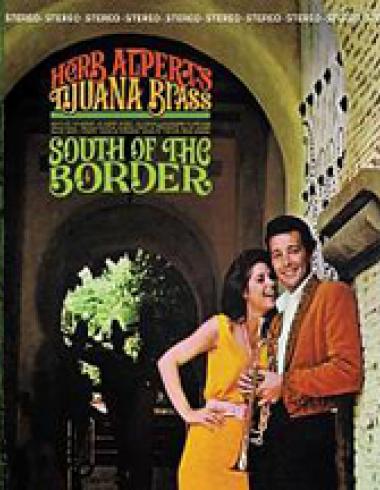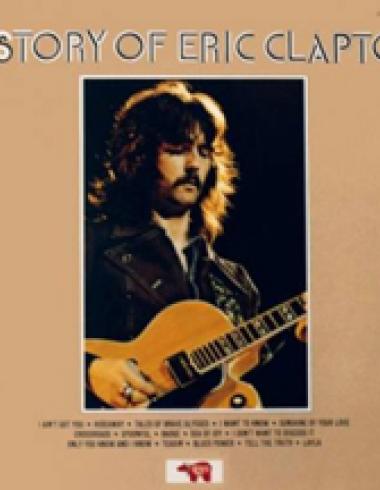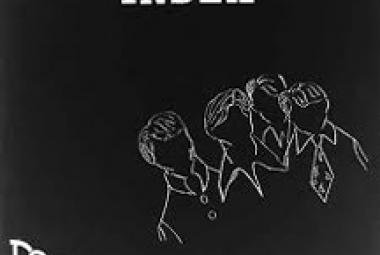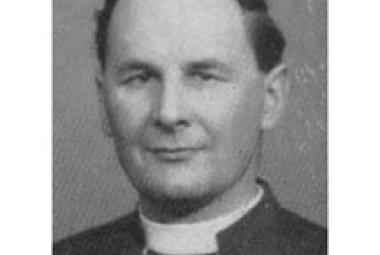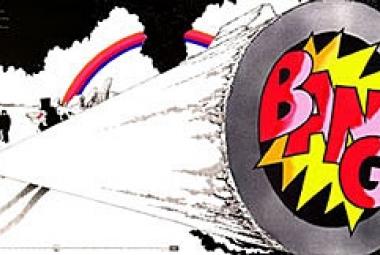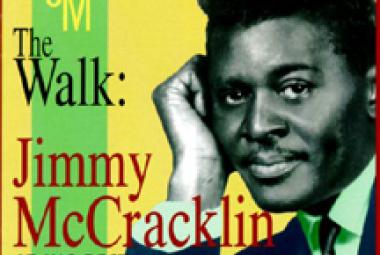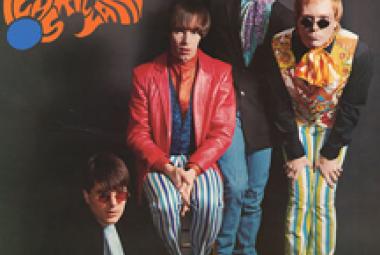Bob Dylan (born Robert Allen Zimmerman, May 24, 1941) is an American singer-songwriter, artist and writer. He has been influential in popular music and culture for more than five decades. Much of his most celebrated work dates from the 1960’s when his songs chronicled social unrest, although Dylan repudiated suggestions from journalists that he was a spokesman for his generation. Nevertheless, early songs such as “Blowin’ in the Wind” and “The Times They Are a-Changin’” became anthems for the American civil rights and anti-war movements. Leaving his initial base in the American folk music revival, Dylan’s six-minute single “Like a Rolling Stone” altered the range of popular music in 1965. His mid-1960’s recordings, backed by rock musicians, reached the top end of the United States music charts while also attracting denunciation and criticism from others in the folk movement. (More from Wikipedia)
When Link Wray died in 2005, both Bob Dylan and Bruce Springsteen played “Rumble” live in tribute.
(February 2013)
* * *
If anything, Leon Redbone had an even more stylized appearance than Tiny Tim; and he became known for his performances of old songs like “Champagne Charlie”, “My Walking Stick” and “Shine On Harvest Moon” in a creaky voice while playing a guitar. Though his was basically a novelty act also, Redbone got a lot more respect. Bob Dylan for one was impressed when he performed at the Maricopa Folk Festival in the early 1970’s; and Rolling Stone magazine praised his singing as “so authentic you can hear the surface noise [of an old 78 rpm].” Like Tiny Tim, Leon Redbone was also a frequent guest on the Tonight Show as well as Saturday Night Live.
* * *
Most of the songs on the Giles Brothers album, The Giles Brothers 1962-1967 are apparently originals – or at least I’ve never heard them before – with the exception of a fine cover by the Brain of Bob Dylan’s “Most Likely You Go Your Way (and I’ll Go Mine)”, featuring Mike Blakesley on trombone (!). Blakesley also performed on the 1971 McDonald and Giles album.
(March 2013)
* * *
The Chambers Brothers, who are best known for their 1968 psychedelic hit song “Time Has Come Today”, had started out as a gospel quartet in the 1950’s and gradually edged into folk music during the early 1960’s. They went electric at about the same time that Bob Dylan did – and at some of the same venues even, such as the Newport Folk Festival.
* * *
Meic Stevens is a national hero in Wales who began writing and recording songs in 1967 in the Welsh language in an attempt to create a body of pop music for the nation. He is often referred to as “the Welsh Dylan”.
(April 2013)
* * *
I was born a couple of years later than Greg Shaw, so I turned 14 in 1965. By then, the Beatles and the Rolling Stones were old news; and while I was still paying attention, what was really grabbing me at the time were American artists and bands. First and foremost was “Like a Rolling Stone” by Bob Dylan; that song – plus the flip side “Gates of Eden” that was nearly as long and every bit as good – captivated me in a way that I just couldn’t keep quiet about. Other great folk-rock sounds of that period included the release of the cover of Dylan’s “Mr. Tambourine Man” by the Byrds and the revamped “The Sounds of Silence” by Simon and Garfunkel. Bob Dylan himself preferred the Byrds’ cover to his own recording of “Mr. Tambourine Man”; but in my usual contrarian way, I preferred Dylan’s original – it was a lot longer for one thing.
These songs were followed closely by the glorious sounds of garage rock and psychedelic rock that were then in their infancy. Songs like “Pushin’ Too Hard” by the Seeds, “We Ain’t Got Nothin’ Yet” by Blues Magoos, and “I Had Too Much to Dream (Last Night)” by the Electric Prunes really made an impression on me. It wasn’t until I picked up the Nuggets collection and then the numerous Pebbles albums that I plumbed the depths of this scene, but it was by no means brand new to me either.
Still, in 1959, this kind of loss was a new experience (particularly for young people). In his moving 1971 epic of the American landscape of the 1960’s, “American Pie”, Don McLean immortalized this event as “The Day the Music Died”. Rich with imagery worthy of a Bob Dylan song, McLean has refused to discuss the meaning of the cryptic lyrics over the years, though the main theme is clearly the loss of innocence.
But there is no shortage of interpretations of “American Pie” from all quarters (I took a stab at it myself ages ago): Bob Dylan is said to be the “jester”; the Beatles are evidently referenced in the line “sergeants played a marching tune”; and the Rolling Stones (Mick Jagger in particular) seem to have a more central role in the tale – the fifth verse includes the lyric “Jack be nimble, Jack be quick / Jack Flash sat on a candlestick” (an obvious reference to the Rolling Stones hit “Jumpin’ Jack Flash”), several mentions of Satan (“Sympathy for the Devil” is one of several times that the Stones toyed with Satanic imagery), and apparent veiled references to the horrific Altamont Speedway Free Concert that occurred on the heels of Woodstock on December 6, 1969, where the Rolling Stones were the featured act, and the Hells Angels motorcycle club provided security.
* * *
Bob Dylan (who was 17 at the time) attended Buddy Holly’s show on January 31, 1959 – only three days before the airplane crash. Dylan spoke of the concert during his 1998 Grammy acceptance speech for Album of the Year for Time out of Mind: “And I just want to say that when I was sixteen or seventeen years old, I went to see Buddy Holly play at Duluth National Guard Armory, and I was three feet away from him . . . and he LOOKED at me. And I just have some sort of feeling that he was – I don’t know how or why – but I know he was with us all the time we were making this record in some kind of way.”
As an aside, fellow Bob Dylan fans who might have quit buying his albums back in the 1960’s and 1970’s would do well to start with Time out of Mind – Dylan’s next album, Love and Theft is even better – to see how great his newer music still is.
(June 2013/1)
* * *
Meanwhile, during March 1964, Tom Wilson was the producer for the first album by Simon and Garfunkel, Wednesday Morning, 3 A.M.. Like Bob Dylan’s first album, it was a fairly conventional folk album with numerous traditional folk songs and cover songs, including “The Times They Are A-Changin’”; there were only four songs that had been written by Paul Simon.
* * *
I didn’t know that Hamilton Camp was also a folksinger until I got to college and discovered that his 1964 album Paths of Victory was a favorite album of the College Republican crowd that I began running with. For some reason, they considered it to be the perfect album to play if you were really depressed; for myself, I loved Paths of Victory because it included covers of seven – count them, seven – Bob Dylan songs, most of which were unfamiliar to me.
* * *
I am not really much of a lyrics guy; even on some of my very favorite albums, I probably couldn’t quote a single line. Obviously that’s not true of my entire collection; the lyrics from Bob Dylan were a big attraction to me from the very beginning. However, the most important thing to me about song lyrics is that they need to mean something to the singer, not that we as the audience necessarily need to know what is being said or even what it means. Years ago, I once wrote about song lyrics, mentioning a Twisted Sister hit song from 1984: “The point is, you can’t sing ‘Mary Had a Little Lamb’ angrily, but you can sing ‘We’re Not Gonna Take It’ with a bit of venom.”
(June 2013/2)
* * *
Like many of Bob Dylan’s protest songs, another song on It’s My Way!, “Universal Soldier” has a different target from what one might expect. Rather than railing at politicians and tyrants, Buffy Sainte-Marie points out that ultimately, the common soldiers are the ones doing the fighting: “He’s the Universal Soldier and he really is to blame”. “Universal Soldier” was an early hit for Donovan.
(August 2013)
* * *
Mouse and the Traps was one of the first bands that I wrote about; they were featured on the original Nuggets album with their fabulous Bob Dylan soundalike song “A Public Execution” that was released under the name Mouse. The band later backed a singer named Jimmy Rabbitt on a cover of “Psychotic Reaction”, a hit song recorded by Count Five. The song was released under the name Positively 13 O’Clock; this is a Bob Dylan reference as well: The band name was adapted from his hit song “Positively 4th Street”. It was quite a thrill when we moved to New York in early 1990, and I found that our first apartment was within sight of the western end of the street mentioned in this Dylan hit, West Fourth Street in Greenwich Village. Their version of “Psychotic Reaction” was included on the very first Pebbles album.
(September 2013)
* * *
Among the eulogies written about Lou Reed are some that compare his contributions to rock and roll to those of Bob Dylan and John Lennon, and I can’t really argue with that assessment.
(December 2013)
* * *
Joan Baez in Concert, Part 2 (1963) included the first Bob Dylan songs that she recorded, “Don’t Think Twice, it’s All Right” and “With God on Our Side” – she says that the latter song is the first Dylan song that she learned. Joan Baez and Bob Dylan were starting to become closely associated with one another (and perhaps romantically) as the two leading folk artists of the day; a few months prior to the release of this album, the two had appeared at the 1963 March on Washington, and Bob and Joan were photographed together on the back cover of his album Bringing it All Back Home (1965).
(February 2014)
* * *
Michael Anthony Farren was born in Cheltenham, Gloucestershire in England on September 3, 1943. Mick’s father, Eric Farren was an RAF bomber pilot who was killed during World War II. In a 1972 obscenity trial involving an underground comic called Nasty Tales, Mick Farren defended himself and used this event in his life to illustrate why such publications should not be censored. As related in his autobiography, Give The Anarchist a Cigarette (2001): “My father and thousands of others had gone to war against Nazi Germany among other reasons to prevent the world from being run by a power structure that could send in the goon squad any time it wanted to close down a nonconformist publication.” (The title of his autobiography comes from a comment by Bob Dylan in the groundbreaking 1967 documentary by D. A. Pennebaker called Dont Look Back – there is no apostrophe in the original title – that was later used as a lyric in one of Farren’s songs).
* * *
Besides the Rolling Stones, Rolling Stone magazine is also named after “Rollin’ Stone”, as is Bob Dylan’s signature song, “Like a Rolling Stone”.
* * *
In 1969, Mick Farren “liberated” the earliest large-scale rock concert in the U.K., the 1969 Isle of Wight Festival by encouraging the fences to be torn down. This concert – which took place the month after Woodstock (and with many of the same acts) – featured the Who, the Band, Free, Joe Cocker, and the Moody Blues. But the real excitement was caused by the inclusion on the bill of Bob Dylan, who had been little seen since his near-fatal motorcycle accident in July 1966. When Dylan took the stage, audience members included three of the Beatles, three of the Beatle wives, three of the Rolling Stones, Eric Clapton, Liz Taylor, Richard Burton, Jane Fonda, Roger Vadim, Syd Barrett, and Elton John.
One of the main reasons for the location of the original Woodstock was to lure Bob Dylan out of hiding – the idea was to throw a huge party practically on his doorstep that surely he couldn’t resist attending. Woodstock is the name of the town where Dylan lived (and also members of the Band); the festival itself was in Bethel. But resist he did; Bob Dylan instead signed up to appear at the Isle of Wight Festival and set sail for England on August 15, 1969, the day that Woodstock opened.
In 1972, Mick Farren published his first book, a comic-book style polemic that traces the development of the youth subculture from the 1950’s; the subtitle on the back cover is “How Elvis gave birth to the Angry Brigade”. The co-writer with him is Edward Barker, a cartoonist who designed the covers on the second and third albums by the Pink Fairies. The title is Watch Out Kids and is probably adapted from the lyric “Look out kids” in “Subterranean Homesick Blues” by Bob Dylan.
* * *
Along with many other figures from the underground press, Mick Farren moved to the influential New Musical Express (NME) in 1974. Quoting again from the Telegraph obituary: “Allowed free rein to explore the outer reaches of popular culture by its editor, Nick Logan, Farren turned in a series of memorable pieces on people such as the motorbike stunt-rider Evel Knievel and the avant-garde film director Kenneth Anger.
“In the summer of 1976, by which time the Sex Pistols were introducing Britain to punk, Farren’s NME piece headlined ‘The Titanic Sails At Dawn’ [again using a Bob Dylan lyric, this time from one of my all-time favorites, “Desolation Row”] was judged to have caught the mood among the generation of teenagers disaffected by giant stadium acts like the Rolling Stones and Led Zeppelin.”
(March 2014/1)
* * *
Michael Erlewine was active in the Michigan folk scene in the 1950’s and 1960’s; he hitchhiked with Bob Dylan in 1961 and made his way to Greenwich Village in New York and also to San Francisco.
(March 2014/2)
* * *
Homer was fortunate enough to record their single at Robin Hood Studios in Tyler, Texas, which was managed by Robin “Hood” Brians. ZZ Top recorded their debut album, ZZ Top’s First Album at this studio, and Mouse and the Traps laid down their early tracks there as well, including their Dylanesque classic “A Public Execution”.
(April 2014)
* * *
Manfred Mann was one of the original British Invasion bands; they had a major hit in America (it was #1 in the U.K.) with a bizarre Bob Dylan song, “Quinn the Eskimo (Mighty Quinn)”, along with an earlier hit song called “Do Wah Diddy Diddy”.
* * *
Manfred Mann’s Earth Band released their first album, Manfred Mann’s Earth Band in 1972 and has an impressive discography by any standard. One of the endearing features of the band’s music is that they continue to unearth obscure Bob Dylan songs for their albums, with one of them, “Get Your Rocks Off” being used as the album name, Get Your Rocks Off (1973). I have been collecting Earth Band albums for close to 40 years and keep finding new ones every few years. Allmusic lists 21 albums by Manfred Mann’s Earth Band.
(June 2014)
* * *
Major and minor artists alike often have spiritually themed songs or overtly Christian songs on their albums. The first cut on Simon and Garfunkel’s debut album, Wednesday Morning, 3 A.M. is a gospel song called “You Can Tell the World” that was written by Gibson & Camp (Bob Gibson and Bob Camp – later known as Hamilton Camp). Peter, Paul and Mary had numerous gospel songs on their albums, including “This Train” on their first album, Peter, Paul and Mary. Also on this album, under the name “If I Had My Way”, is a traditional song also called “Samson and Delilah” that is based on the Biblical account. Many other rock musicians have recorded this song, notably the Grateful Dead, Bob Dylan, Ike and Tina Turner, Bruce Springsteen, and Garbage front woman Shirley Manson.
(July 2014)
* * *
* * *
Joan Osborne’s major-label debut album Relish was an instant favorite of mine when it was released in 1995, and the album has an amazing array of moods. Despite curve balls like “Let’s Just Get Naked” that celebrate a playful sexuality, most songs have a spiritual bent, from the haunting, infectious “St. Teresa”, to a fairly obscure Bob Dylan song, “Man in the Long Black Coat”.
(November 2014)
* * *
In 1967, Kim Fowley produced the sole album by the Belfast Gypsies and also co-wrote some of their songs. The band included some members of Van Morrison’s first band Them before he left to become a solo artist. The album was misleadingly named Them Belfast Gypsies (particularly as the title is laid out on the cover). Allmusic gives the album 4 stars, and Richie Unterberger notes in the write-up for the album: “Their tense version of ‘It’s All Over Now, Baby Blue’ is one of the greatest obscure Dylan covers, and the magnificent harmonica on ‘Midnight Train’ is a highlight.”
(January 2015/1)
* * *
The entry on the Carter Family in Allmusic (by David Vinopal) includes: “Comprised of a gaunt, shy gospel quartet member named Alvin P. Carter and two reserved country girls – his wife, Sara [Dougherty Carter], and their sister-in-law, Maybelle [Addington Carter] – the Carter Family sang a pure, simple harmony that influenced not only the numerous other family groups of the ’30s and the ’40s, but folk, bluegrass, and rock musicians like Woody Guthrie, Bill Monroe, the Kingston Trio, Doc Watson, Bob Dylan, and Emmylou Harris, to mention just a few. It’s unlikely that bluegrass music would have existed without the Carter Family.”
* * *
Their first album, Broken Boy Soldiers was released in May 2006; it was named Album of the Year by the British magazine Mojo. The Raconteurs spent much of that year touring, including eight dates as the opening act for Bob Dylan in November 2006.
(February 2015)
* * *
After a remarkably quick guitar tuning, Richie Havens improvised a song called “Freedom” that was based on the Negro spiritual “Sometimes I Feel Like a Motherless Child”. It was this performance that made it into the Woodstock movie. Bob Dylan has incorporated “Motherless Child” into his songs; Wikipedia lists dozens of others who have also recorded the song in one form or another.
* * *
Since I only have Cry of the City thus far, I have Phil Gammage’s playlist on from his website, www.philgammage.com. Just one great song after another; they are mostly original songs, but one is a cover of “Baby, Let Me Follow You Down”, a traditional folk song that Bob Dylan included on his first album that I discussed earlier, Bob Dylan; another standout is an instrumental guitar-driven track called “Royal Flush”. (Two of Phil Gammage’s solo albums have been all instrumentals).
(March 2015)
* * *
In my last post, I was mostly talking about solo songwriters like Bob Dylan and Woody Guthrie, but writing songs is primarily a collaborative profession. In many cases, the music and the lyrics would be written separately. Richard Rodgers was a towering figure in writing music for Broadway shows and other productions; he primarily worked with two different lyricists over the years, Lorenz Hart and Oscar Hammerstein II.
* * *
As I wrote about Bob Dylan in my last post, his first album, Bob Dylan sold modestly; and Dylan became known as “Hammond’s Folly” around Columbia Records – John H. Hammond had decided to sign Dylan on the spot after hearing him perform on September 14, 1961 at the apartment of Carolyn Hester and Richard Fariña (two folksingers that I also wrote about last month), though he evidently made a formal audition first (no recorded evidence of that audition survives, unfortunately).
As can be seen from his example and that of Diana Ross and the Supremes, who were referred to at Motown Records early in their career as the “No Hit Supremes”, record companies give up on musicians pretty quickly; and any number of the Under Appreciated Rock Bands and Under Appreciated Rock Artists that I have written about over the years could potentially have had high-profile careers. This doesn’t seem to be true so much for, say, Hollywood actors, as many of them are able to hang around for years or even decades before making it big.
* * *
Black Russian had some assistance with the lyrics, perhaps because English is not their native language; they hardly spoke the language at all at the time that they defected. Lyricists who lent a hand include Allee Willis, who co-wrote the lyrics for their beautiful first single “Leave Me Now”. Willis has had a long career as a writer, songwriter, set designer, and artist. From Wikipedia: “[Allee Willis]’ songs have sold over 50,000,000 records, including ‘September’ and ‘Boogie Wonderland’ by Earth, Wind and Fire, ‘Neutron Dance’ by the Pointer Sisters, ‘What Have I Done to Deserve This?’ by Pet Shop Boys with Dusty Springfield, and ‘Lead Me On’ by Maxine Nightingale. Willis has collaborated with hundreds of leading artists and composers from all fields of music, including Bob Dylan, Patti LaBelle, James Brown, Herbie Hancock, Deniece Williams, and Motown legend Lamont Dozier.”
(April 2015/1)
* * *
And then they threw Linda Pierre King into the mix – and that just isn’t playing fair. Neither one of the CD’s that I have provides any information to speak of about her. The liner notes in one of them describe her as a quintessential hippie folksinger, and the small picture that is included bears that out. Now anyone trying to ferret out information about Linda Pierre King has to get past all of the made-up story line about her hanging out in a Greenwich Village club called Beanie’s something-or-other, and then meeting and marrying the so-called King of Barber Shop.
(April 2015/2)
* * *
